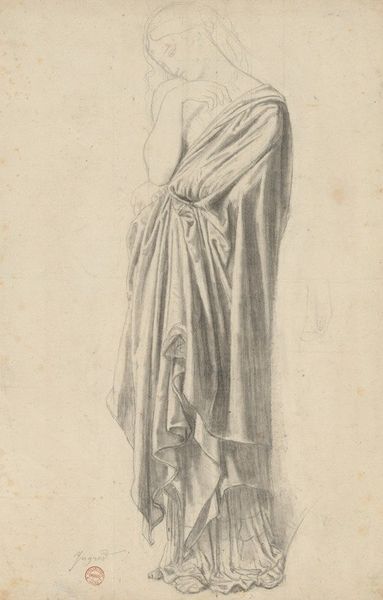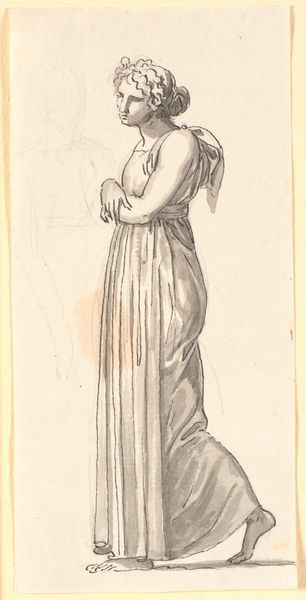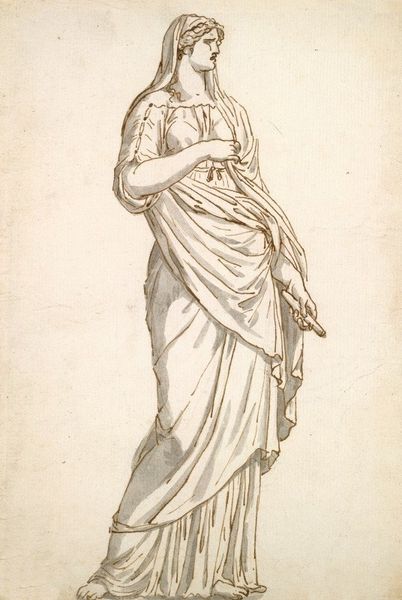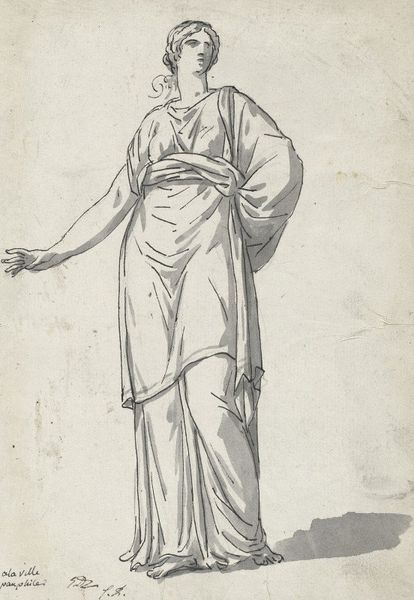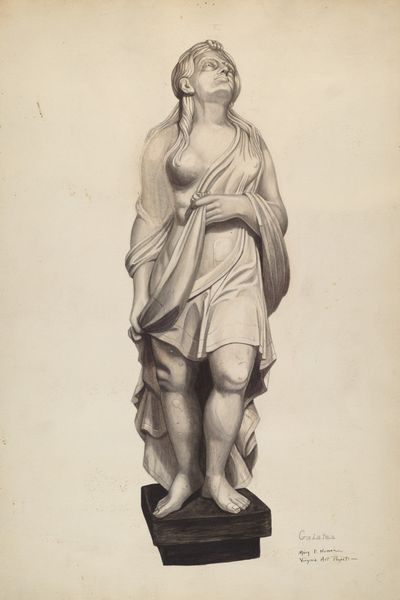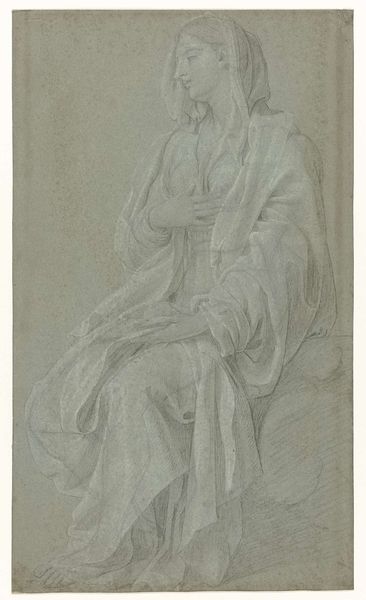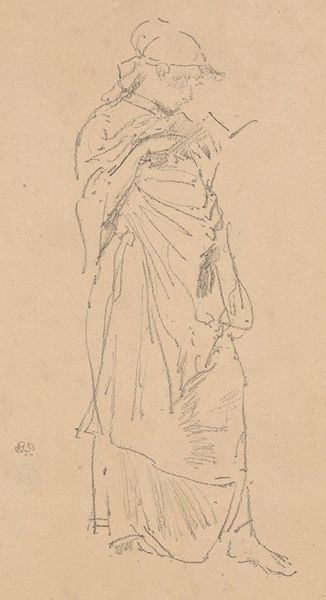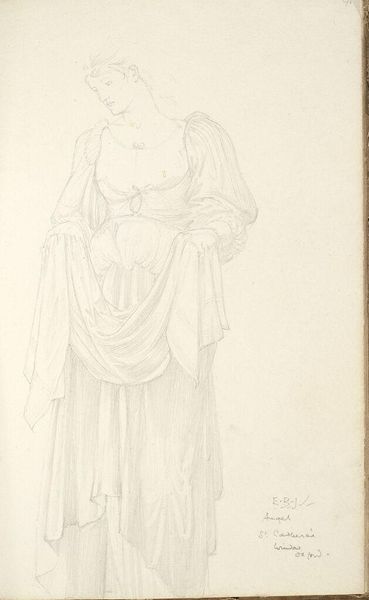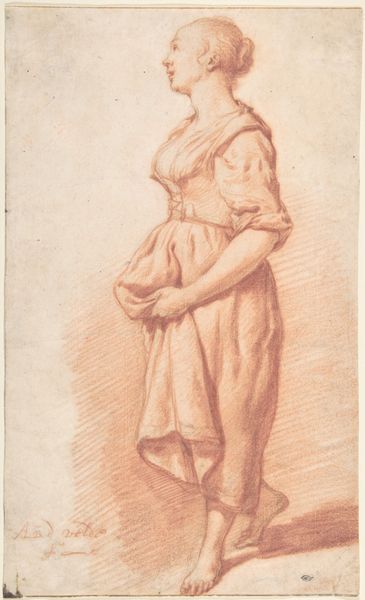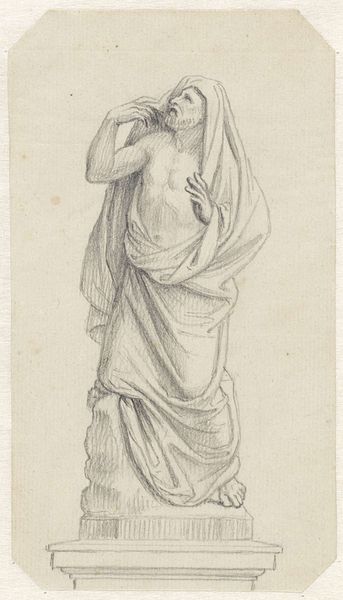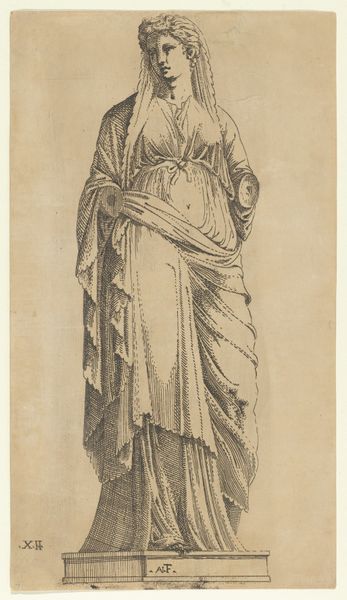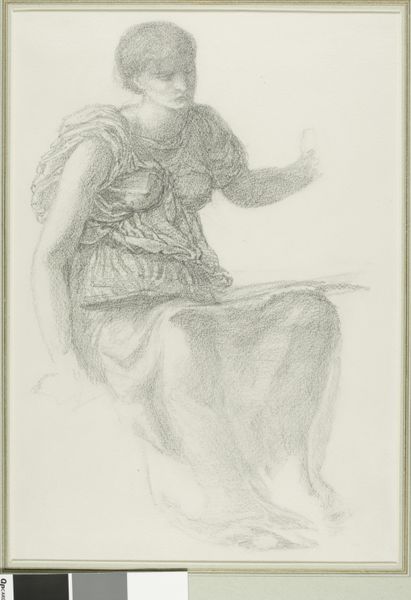
drawing, sculpture, pencil
#
drawing
#
greek-and-roman-art
#
figuration
#
pencil drawing
#
ancient-mediterranean
#
sculpture
#
pencil
#
portrait drawing
#
academic-art
Copyright: Public Domain: Artvee
Curator: James Ward’s pencil drawing, "Study of Sculpture; from the Elgin Marbles," presents a headless, armless torso draped in classical garb. The detail is extraordinary. Editor: The unfinished quality, the shading that fades almost into nothing around the figure, gives it a sense of vulnerability and incompletion. Curator: Indeed. The strategic use of chiaroscuro accentuates the folds and drapery of the classical sculpture, which draws our eye toward the way the material cascades. There is a pronounced structural and compositional awareness. Editor: But consider the original object—one of the Elgin Marbles. Removed from the Parthenon, and here rendered again through Ward's hand, tracing over classical forms. Where was the marble sourced? Who quarried it? We often lose this labor within neoclassical admiration. Curator: A valid point. But what of the Platonic ideal Ward seeks to capture, the perfect forms hinted at by this fragment? Is the artist striving to create the sculpture anew in drawing, almost conjuring its perfection through replication? Editor: I wonder about the effect of the reproductive process, and of Ward encountering it as a copy. Are we meant to see how artistic talent can trace or transform existing sources of classical forms? There are questions raised here about the nature of labour, transfer, and cultural property. Curator: Ultimately, the drawing, though incomplete, invites contemplation on artistic interpretations across media—drawing informing sculpture, and vice versa, using light to mold form through tone and shading. It invites our contemplation on those original artists of the ancient marbles, of their visions carried across centuries through artistic study. Editor: And reminds us to always ask about the human toil behind the stone. To consider all of the unseen effort which is not explicitly within the artwork. That perhaps, is its strongest contribution.
Comments
No comments
Be the first to comment and join the conversation on the ultimate creative platform.

